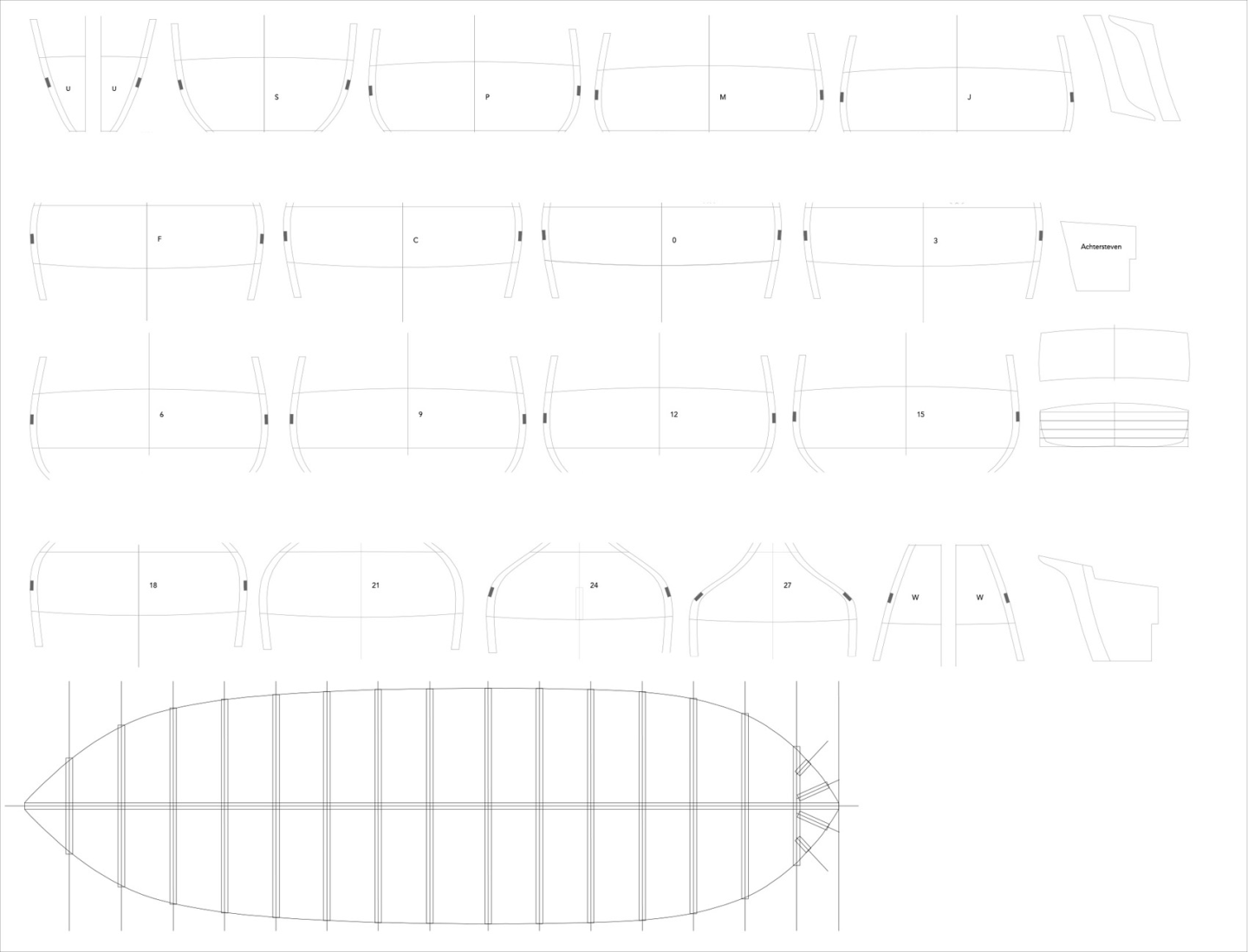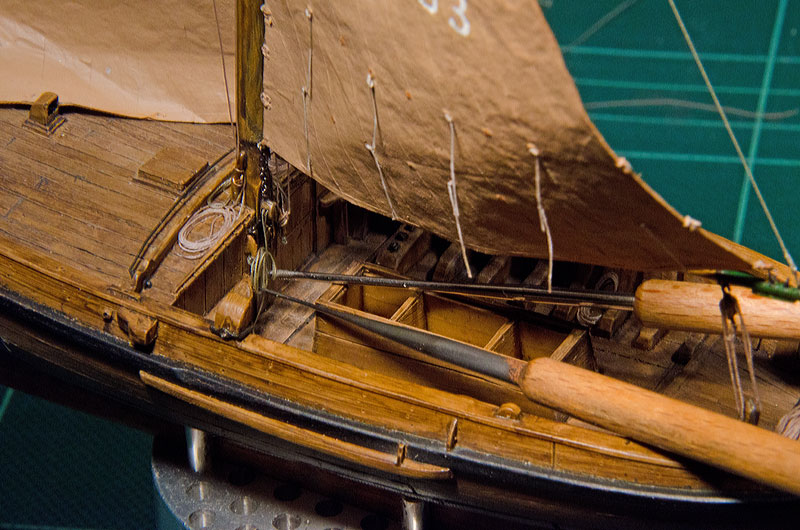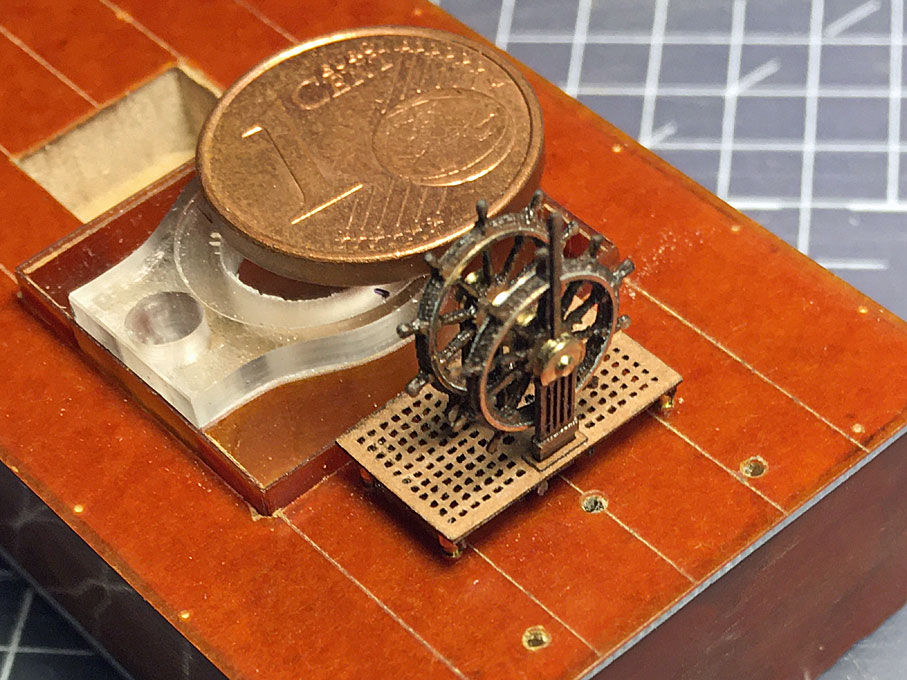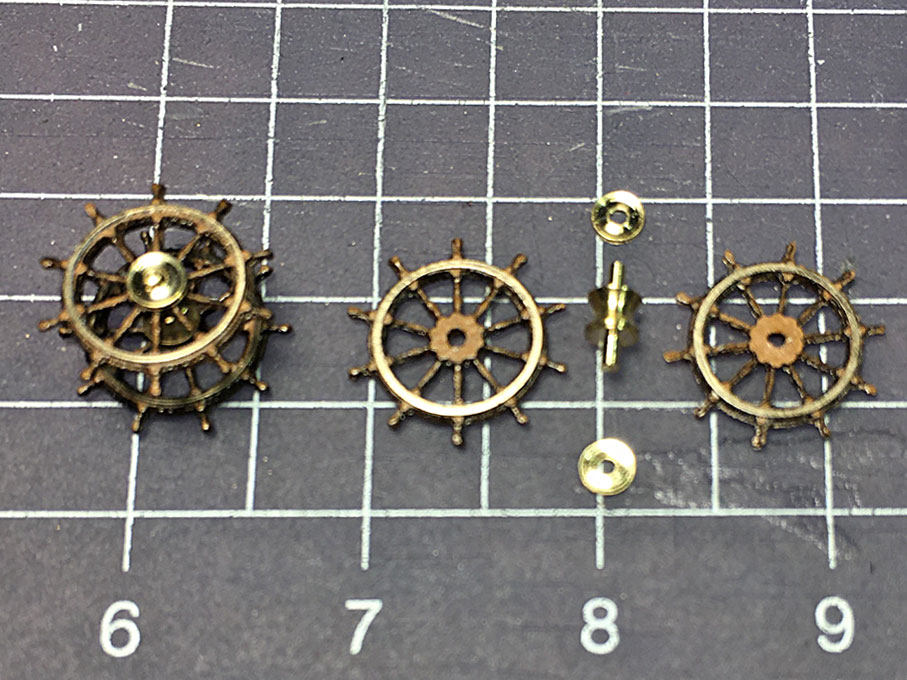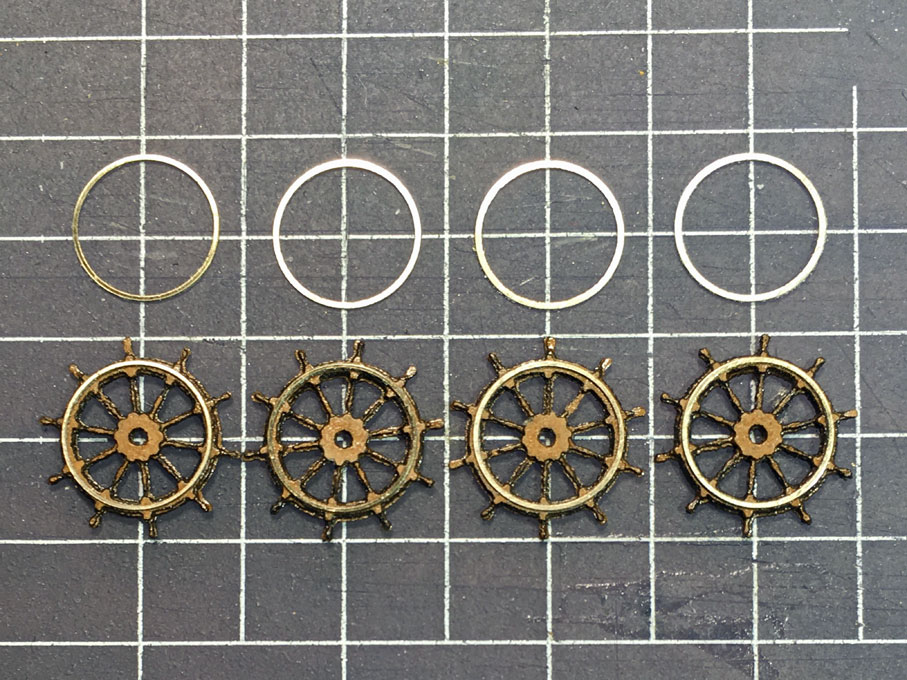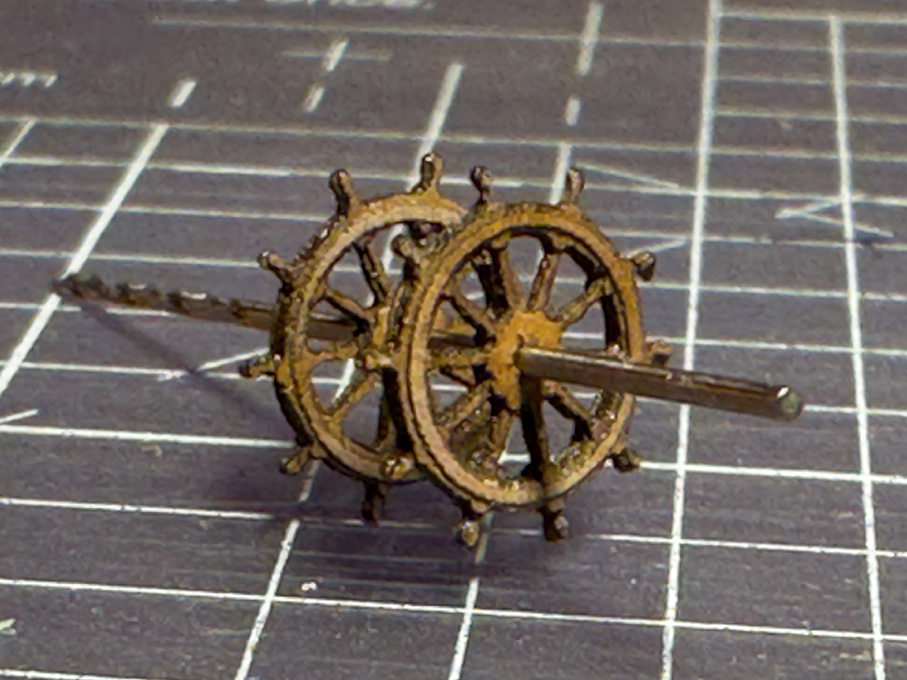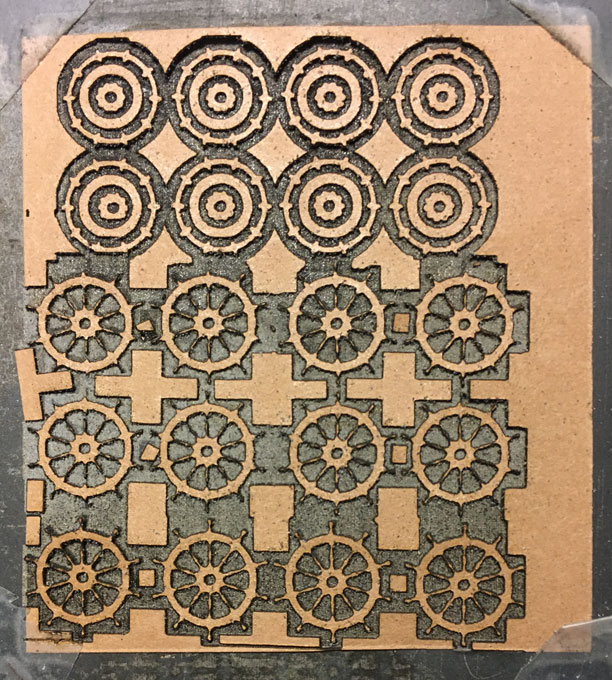-
Posts
6,547 -
Joined
-
Last visited
Content Type
Profiles
Forums
Gallery
Events
Everything posted by wefalck
-
... keep in mind that Javier (who is also here on MSW) mostly works in 1/150 to 1/200 scale and his creations are only a few centimeters long. I think I suggested earlier also to fill the spaces between the bulkheads, which makes fairing and planking easier.
- 312 replies
-
- Chile
- Latin America
-
(and 6 more)
Tagged with:
-
First of gratulations to this nice model and the gold medal! Concerning figures: 1/144 seems to be a common aircraft model scale. The German manufacturer Preiser (probably the best on the market for styrene figures) has a small range in that scale: https://www.preiserfiguren.de/download.php?file=PK 28 Seite 308.pdf. There are also numerous offers of 3D-printed military figures, but one would need to look around for another market platform after Shapeway went into bankruptcy last summer. I believe that the UK model railway N-scale is actually 1/148 rather than 1/160, so poking around British manufacturers might be helpful. In any case, the figures will need some carving and sculpting to bring them to the right era. This is not too difficult. I have just done this for my S.M.S. WESPE project here in 1/160 scale.
-
There are several options: - you can use your battens and mark off the position of bulkheads equally on both sides; one can do this with a piece of string, the length of which one adjusts iteratively together with the angle of the bulkhead until it is equal on both sides; always measure from the stem; this is perhaps the most precise method without tools. - you can draw/print the pattern of bulkheads on a piece of paper and, holding it over the framework, you adjust and glue in place the bulkheads one by one. - use something of which you are sure that it has a right angle and adjust the bulkheads against this. The boatbuilders of old probably would have used the first method ...
- 312 replies
-
- Chile
- Latin America
-
(and 6 more)
Tagged with:
-
I wouldn't know what is available in the USA. For me, at railway scales the manufacturer to go to is Preiser: https://www.preiserfiguren.de. Preiser has a small range of 1/100 figures, but basically only modern pedestrians for architectural models. There a dozens of manufacturers for military figures in styrene, casting resin, and white metal. I am not familiar with the current market in that respect. There are also numerous offers for 3D-printed figures on the respective platforms, mainly in the military and aircraft scales. Many of these figures seem to be of good animation and detailing, but the printing quality may vary. Sometimes they are scaleable and you can specify the scale you want. Another route are service providers of files for 3D-printing, which can be customised in sometimes quite sophisticated way, say with respect tot he animation and clothing. The problem is that they seem to mainly aim at the 'gaming' community, where there seems to be a fashion of gnome-like appearance. The latter is also a problem with many of the 1/72 scale figures that are available commercially (see https://www.plasticsoldierreview.com).
-
Yes, I would think that this would be a typical job for photoetching. I would actually give it to my laser-cutter to chew ... and then build up the body with acrylic gel, followed by some gilding. There are also these '3D-printing sticks', sort of hand-held extruders with which one can build-up such patterns.
-
The biggest market is that for model railways and there are a lot of offers in 1/76, 1/87, 1/120, 1/160, and 1/220. Or the military scales of 1/32, 1/48, and 1/72. 1/144 seems to be popular with aircraft modellers. Ship model tend to be built in the scales in which the old drew their plans: 1/96 (1/100), 1/48 (1/50), or larger. I chose railway scales for my projects to have access to the respective ranges of figures.
-
There are a couple of reasons: there are figures available at N-scale - it's small, which is important, when you don't have a lot of space for large models - and it is challenge to try to put as much detail into it, as one typically would put into something twice or three times the scale 😉 1/150 to 1/160 scale is still big enough so that one can find suitably thin materials for representation in scale.
-
Thanks for your interest and comments! @Dr PR One has to keep in mind that the hull will be only about 150 mm in total and the planks will be a maximum of 1.5 mm wide and around the bulwark only 1 mm (= 160 mm on the prototype. I have been thinking about marking the planks on the bulkheads, but with the close tolerances needed, that may not be possible. I started marking out the whale, but that has to be improved still, as the tapering is not yet considered. Tapering the planks at that size will be a challenge. I may calculate the width from the CAD and then make a print-out on paper and try to shape the planks to this paper template. I will have to build a jig to hold the 1.5 mm wide and 0.25 mm thick strips of styrene to be used for planking while trying to taper them. @BANYAN Most people here, of course, would use wood, but at 1/160 scale, covering-up all the wood-grain is a lot of work. It would be completely out of scale. Also, for me it is difficult to obtain and mill hardwood, such as boxwood. Living in a city apartment imposes certain restrictions. As the whole model will be painted, as ships of that time usually were, it doesn't really matter what is underneath. Acrylic glass (particularly the cast variety of PLEXIGLAS®) is an excellent material for machining and can hold very sharp edges, which is needed at this small scale. I still have a good stock, as my father used to work for a subsidiary of the manufacturers of PLEXIGLAS and we got the stuff for little money back then.
-
Just to keep the ball rolling It is not that nothing happened in the background in spite of various travels and work to earn money … Much time was spent interpreting the original drawings and to prepare drawings for the actual building process. Luckily the spacing of the frames in the body-plan was such that it equalled the spacing of three frames of the prototype and every third frame would have been elongated to serve as bulwark stanchion. This saved a lot of real lofting, as the bulkheads just had to be copied and the missing details and reference lines needed to be added. However, cant-frames were not drawn and had to be lofted from the lines- and body-plans. The same for the longitudinal frames that support the transom and the gilling. As this will be a waterline model, the hull will be constructed on a base-plate. The base-plate will be 4 mm Plexiglas into which 1 mm deep slots for the bulkheads and the stem- and sternpost pieces. The size of the drawing 190 mm wide and 145 mm high The drawings will be stuck to 1 mm acrylic glass and sawn out. To be continued
-
I don't have a picture to hand, but there seem to be ways of rigging, where the parrel has an eye spliced in the end and the rope goes around the mast, the yard then down through its own eye. In this way it can be hauled close or loosened from the deck.
- 286 replies
-
They could even pose a danger, when blown away partly, as they could catch any crew on deck and sling-shot them overboard. In a storm, one would tie-down and furl everything that is not really needed in order to reduce wind resistance. Only small sails, if any, were set to keep the steering in the ship. An awning would have had the effect of turning the ship into the wind in a rather uncontrolled fashion.
-
Not sure, it would work at this scale, but I coerce ropes into a 'natural' shape by wetting them with a fast-drying varnish and holding them down until the solvent has evaporated:
- 286 replies
-
I make my tissue-sails on a board covered tightly with cling-film. Paints and glues faintly stick on it and it can be peeled off instead of peeling the sail off, if needed.
- 286 replies
-
Apart from John's comment, it also depends on what you really want to do with it. Wooden battens indeed follow a natural curve of the hull and would be the tool to go to, when your planking scheme is unconstrained. On the other hand, if you want to reproduce the planking scheme of a historical prototype or model, you may have to divide the circumference of the frame into the correct number of planks and this will determine their run, width and shape. These can be taken off with strips of transparent paper and transferred to the plank. BTW, the main constrain on planking schemes are the wales and rails (and of course the keel, as well as stem- and stern-post), which are given by the historic design. So the planking has to fall in between these.
-
That would be the main use, really. You take off the circumference of a frame e.g. with a narrow strip of paper, then you set the dividers to the number of planks you need, take with the long end the total length and, voilà you got the width of the planks at the short end. You then can transfer this to the hull directly or mark it on the paper strip. Beware, this is in fact a chain-measurement and any individual error at each marking off adds up. Normally, in engineering this is avoided. That is why I would do this on a computer and print out the strips for each frame.
-
It probably depends also on the size of model one is working on and on the size of the proportional dividers. I found mine just too unwieldy for my small models. If you insist on the proportional dividers, you also divide the paper strips with them - you have to use the paper strip anyway to measure the total circumference of the frame.
-
I think in this case the thickness of planking is important, at least not as long as you can't see it on the finished boat, because this will be a rendering of a type of boat, rather than a specific one. The size of the lanchas may have varied a bit depending on the preference of the owner and the availability of material. On the other hand, plank thickness is important for determining how much much the stem and keel pieces have to protrude beyond the bulkheads. As the original plan was for a model, one needs to know for what plank thickness the bulkheads were calculated. Working with thinner planks has two advantages: bending is easier and the edges of the planks need to be bevelled less in order to achieve a close fit between adjacent planks.
- 312 replies
-
- Chile
- Latin America
-
(and 6 more)
Tagged with:
-

Post your Measuring Devices and Gauges
wefalck replied to aaronc's topic in Modeling tools and Workshop Equipment
I found a small, only 10 cm long analogue Vernier-caliper with 0.05 mm Vernier most useful for work around the project and on the lathe. Less cumbersome than the bigger and let alone the digital ones. I also use a small micro-meter, a very thin right-angle square, a set of sheet-metal angle gauges. -
I haven't had time to read your last two posts yet, but just a quick comment on points 2 and 3 on building method: Double-planking, I think, was invented by kit-manufacturers to deal with the fairing difficulty of too widely spaced bulkheads and to provide a good surface for glueing the 'good' planking. However, if the bulkheads are not faired properly, this will transpose into the whole hull and nothing is gained. A better method, in my opinion, is to fill the spaces between the bulkheads with scrap wood. This wood should be a tad softer than the bulkheads, but certainly not harder. Cut the pieces to a rough shape, not too far off the final hull shape to reduce fairing work and glue them into place. The edges of the bulkheads need to blackened or blued with a marker-pen first. Once the glue has set, you fair down to the bulkheads until only a fine dark line remains visible. This process result in a well-faired and sturdy backbone for the planking. If you made any mistakes in fairing they can easily filled up with filler or pieces of wood and sanded down to the correct shape. A lot of people in Germany at least use this method and I have used it with bulkheads made from brass for an iron ship. Later this afternoon I will have hopefully time to read throught he posts ...
- 312 replies
-
- Chile
- Latin America
-
(and 6 more)
Tagged with:
-
Late arrival as well, didn’t realise there was a new thread … I would venture the guess that boats like that would have had locomotive-type boilers. These are relatively self contained and wouldn’t require massive foundations. A wheelhouse above the boiler may have certain risks (boiler explosions were not uncommon, due to poor maintenance), but would be cosy in winter. The smoke-stacks, if not double-walled would not obstruct the view too much.
- 732 replies
-
- Lula
- sternwheeler
-
(and 1 more)
Tagged with:
-
Once again, this topic is deeply buried in my building log on S.M.S. WESPE and not everyone is interested in ships from that period. However, the propose method my give ideas to other builders of miniature ship models. Wooden steering wheels are complex assemblies, typically made up of a hub, a rim and the spokes. There may be metal reenforcing parts that prevent heavily strained parts, such as the hub, from splitting or keep segments of the rim together. The spokes are long, slender items and are usually turned to a decorative profile. Where they meet the rim, they are square in section and fit into the hub with kind of wedge-shaped tangs. Making such wheels in small scales/sizes, say with less than 10 mm diameter, can be quite a challenge. Here a method is proposed in which the wheels are built up from layers of laser-cut paper. After some tests with my small 3W laser-cutter, 120 g/m2 weight so-called Canson-paper, which is 0.15 mm thick and has a smooth surface, turned out to be the best choice. It cuts well with this laser-cutter, as it is not ballasted with inorganic material, such as barytes, which do not burn or evaporate. If one has a more powerful laser-cutter and a suitable exhaustion, one may rather work with styrene. The freshly cut wheels (I use a roof slate as cutting support) As usual some trials were needed to determine the right cutting parameter combination of contrast, laser-power and cutting depth. The cutting software works with bit-images and one should assume that for a simple B/W-picture the contrast should be 100%, but somehow changing the contrast setting changes the width of the cuts. For this reason, the final dimensions of the parts depend on the contrast setting. Laser-cutting is contactless and the cut-out parts are not moved during the cutting process. Therefore, it is possible to cut them out completely and in contrast to the photoetch-process they do not need to be attached to some frame. When designing the image with which the laser-cutter works, one needs to consider all these factors that sometimes can only be determined by trial and error. The wheels are built up from several layers in order to simulate the joinery work and to arrive at the desired 3D-rendering. Two core parts are thickened by two more layers the outline of which was drawn a bit smaller to simulate the profiling of wheels and handles. A further layer on each side simulates the rim and hub. The individual layers where first thoroughly soaked in fast-drying varnish (Zapon-lacquer), which impregnates and stiffens the cardboard. Then they were sanded smooth using a fine diamond (nail)file. The same lacquer is used to cement the layers together. Unlike many other glues, this lacquer only forms a very thin layer, not adding to the thickness of the material. They are adjusted while the lacquer is still wet and the layers squeezed together. For this flat tweezer as used by stamp collectors proved very handy. Of course, a piece of wire or a drill of suitable thickness are used as axis during alignment of the layers. Assembled wheels (the grid on the cutting mat has 5 mm spacing and the drill 0.8 mm diameter) Once completely dry, the wheels are given another coat of varnish as preparation for further shaping. This can be done with very fine and thin watchmaker needle-files. Thus, the spokes and in particular the handles are rounded as much as possible. If necessary, the procedure is repeated after another coat of varnish to prevent the paper from fraying. Building up the spokes from several layers already helped to achieve this effect. Steering-wheels with brass facing for the rim Some steering wheel have brass-rings screwed to the front face of the rim to reenforce it and perhaps also for decorative purposes. While this can be painted on, it looks more realistic, when it is made from real brass (remember: only real metal looks like real metal 😉 ). The obvious way would be to etch these from brass shim – but when going through this process, the whole wheel could have been etched, again in several layers that are then soldered together … Another route would be to cement brass shim-stock with CA glue to a so-called wax-chuck and to cut out the rings on the lathe. Cutting forces are quite high on the soft shim-stock and experience shows that it is not likely to work. A proven third route is to chuck a suitable piece of brass rod into the lathe, turn down the desired outside diameter, bore out the inside diameter and then part off very thin slices with a sharp and narrow parting tool. It is possible to produce a brass tube with 0.3 mm wall thickness and part off rings of 0.1 mm thickness. After a few trials to get the settings right, this will work fast and repeatable and result in undistorted rings. The rings are deburred on 600 grit wet-and-dry paper, ground finely on an Arkansas-stone and polished on a piece of paper with some brass-polishing compound. The brass rings are cemented onto wheels again with lacquer. A pair of steering-wheels provisionally assembled and the component parts The wheel is no ready for painting. An all-wood wheel can be readily spray-painted, but for a wheel with a brass-face rim, I would recommend brush-painting in order to avoid covering the brass in paint. With the brush mishaps can happen, but that little amount of rogue paint can be carefully scraped off with a scalpel. The paint further helps to define the round spokes and extra paint can be added to enhance this. Unfortunately, it often only after the first coat of paint that imperfections become visible. With some extra paint these may be evened out. The wheel is finished with a rope drum, hub covers etc. which are turned from brass rod. Double steering wheel on a stand and grating also assembled from laser-cut parts
About us
Modelshipworld - Advancing Ship Modeling through Research
SSL Secured
Your security is important for us so this Website is SSL-Secured
NRG Mailing Address
Nautical Research Guild
237 South Lincoln Street
Westmont IL, 60559-1917
Model Ship World ® and the MSW logo are Registered Trademarks, and belong to the Nautical Research Guild (United States Patent and Trademark Office: No. 6,929,264 & No. 6,929,274, registered Dec. 20, 2022)
Helpful Links
About the NRG
If you enjoy building ship models that are historically accurate as well as beautiful, then The Nautical Research Guild (NRG) is just right for you.
The Guild is a non-profit educational organization whose mission is to “Advance Ship Modeling Through Research”. We provide support to our members in their efforts to raise the quality of their model ships.
The Nautical Research Guild has published our world-renowned quarterly magazine, The Nautical Research Journal, since 1955. The pages of the Journal are full of articles by accomplished ship modelers who show you how they create those exquisite details on their models, and by maritime historians who show you the correct details to build. The Journal is available in both print and digital editions. Go to the NRG web site (www.thenrg.org) to download a complimentary digital copy of the Journal. The NRG also publishes plan sets, books and compilations of back issues of the Journal and the former Ships in Scale and Model Ship Builder magazines.




